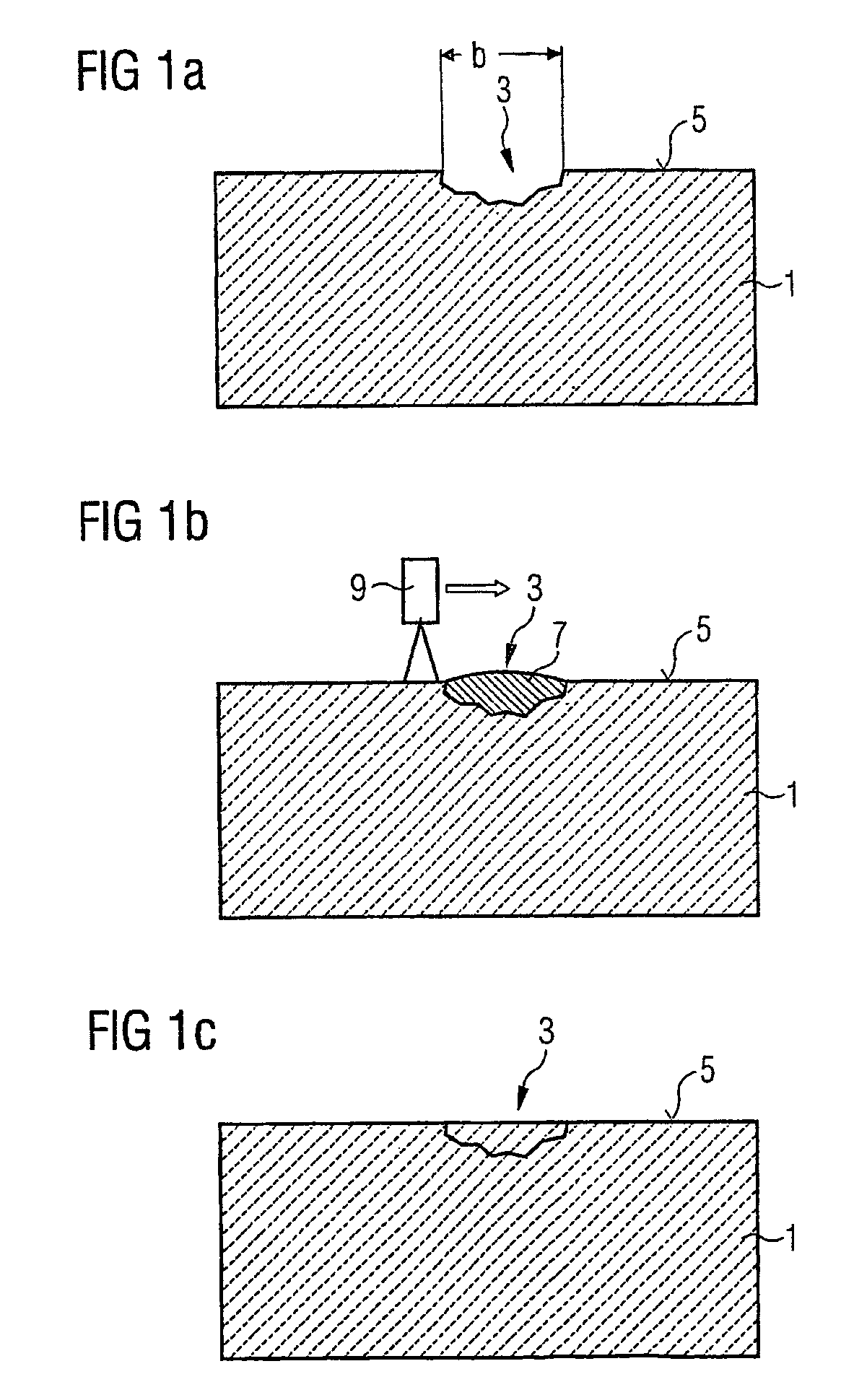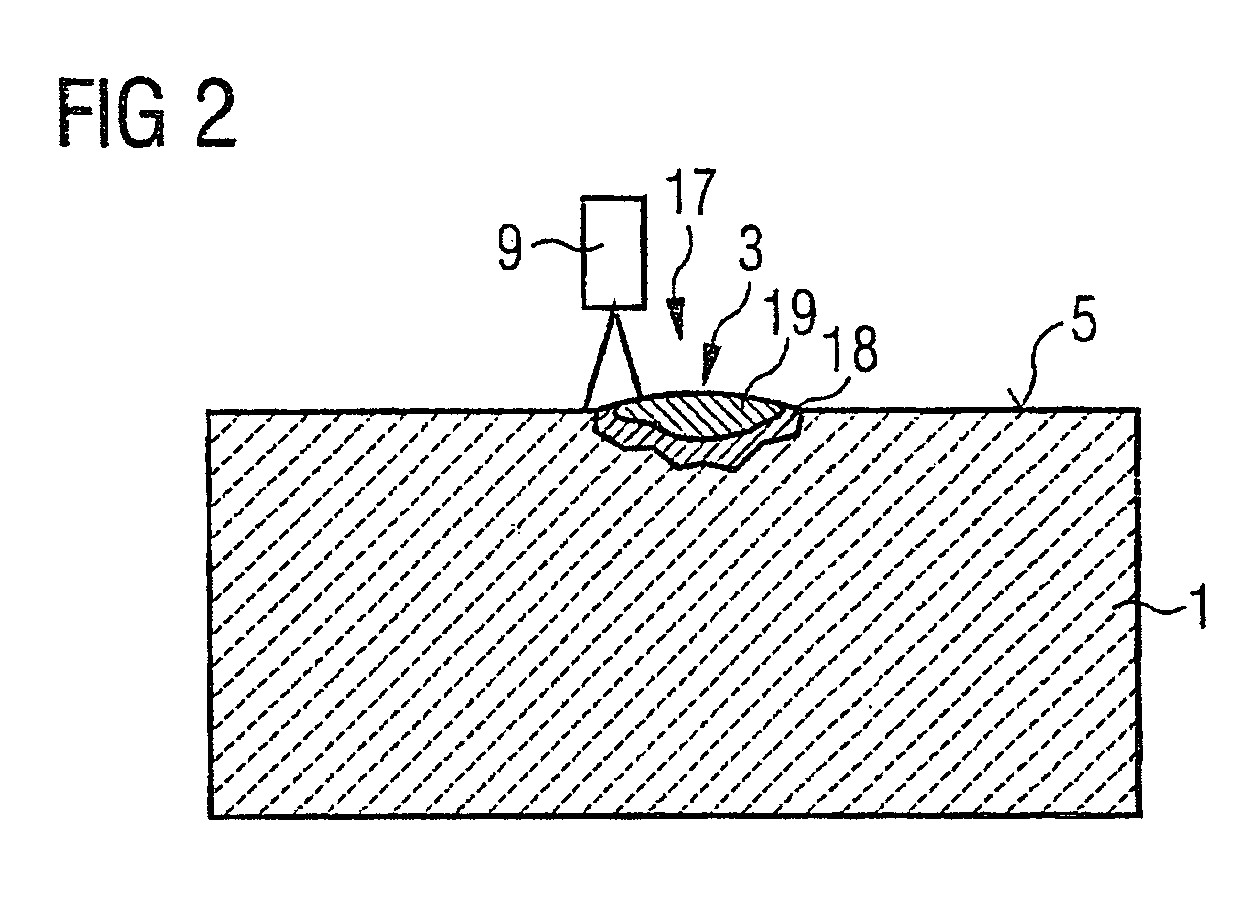Process for repairing a component comprising a directional microstructure by setting a temperature gradient during the laser heat action, and a component produced by such a process
a technology of laser heat action and component, which is applied in the direction of manufacturing tools, turbines, and so on, can solve the problems of material properties that are worse than those of the surrounding, and the material does not have a single crystal or directionally solidified structur
- Summary
- Abstract
- Description
- Claims
- Application Information
AI Technical Summary
Benefits of technology
Problems solved by technology
Method used
Image
Examples
Embodiment Construction
[0031]FIG. 1a provides a schematic view of a damaged component 1.
[0032]The base material of the component 1 comprises an alloy, preferably based on nickel, and has a directional microstructure, which in the figures is indicated by short diagonal dashes. The damage 3 to the component 1 is located in the region of the surface 5 and is illustrated as an indentation in the figure.
[0033]To repair the damaged component 1, a solder 7, which in the present exemplary embodiment is preferably in powder form, is applied to the precleaned, damaged location 3 and is then soldered to the base material of the component 1 by means of the action of heat (FIG. 1b). It is preferable for all of the solder 7 required to be introduced into the preferably precleaned, damaged location 3, if appropriate in a small excess, and in particular for it not to be supplied in steps during the fusing operation.
[0034]Prior to fusing, it is preferable for the solder 7 to be pressed into the damaged location 3. This ha...
PUM
| Property | Measurement | Unit |
|---|---|---|
| melting temperature | aaaaa | aaaaa |
| melting temperature | aaaaa | aaaaa |
| melting temperature | aaaaa | aaaaa |
Abstract
Description
Claims
Application Information
 Login to View More
Login to View More - R&D
- Intellectual Property
- Life Sciences
- Materials
- Tech Scout
- Unparalleled Data Quality
- Higher Quality Content
- 60% Fewer Hallucinations
Browse by: Latest US Patents, China's latest patents, Technical Efficacy Thesaurus, Application Domain, Technology Topic, Popular Technical Reports.
© 2025 PatSnap. All rights reserved.Legal|Privacy policy|Modern Slavery Act Transparency Statement|Sitemap|About US| Contact US: help@patsnap.com



